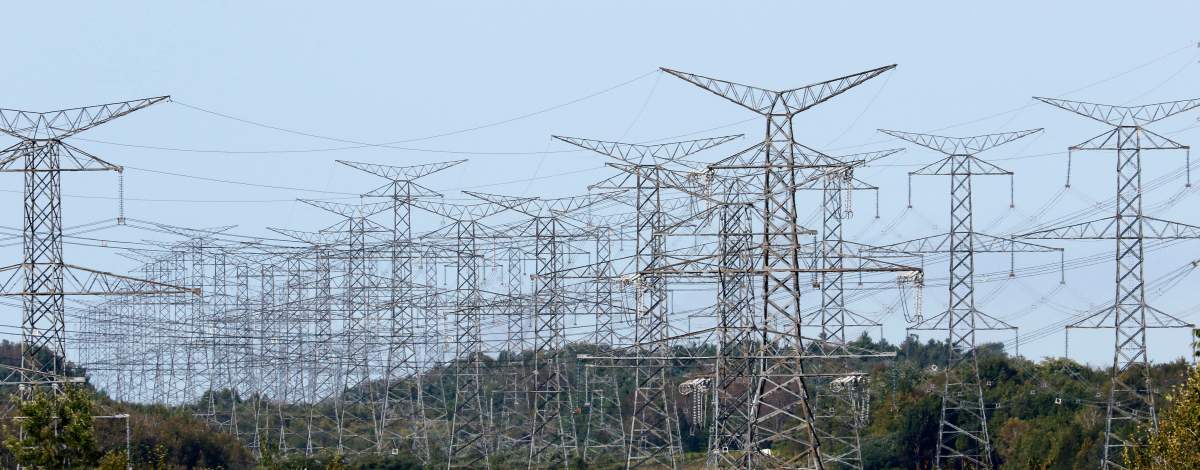Ontario’s energy minister insists the province “has lots of power” and says a forecast leaning towards a hotter-than-normal summer is not a recipe for brownouts or rolling blackouts as critics might suggest.

“Don’t take my word for it, take the system operator’s word for it,” MPP Todd Smith told Global News.
“The IESO, the independent electricity system operator, believes we have lots of fuel in the tank.”
Smith’s take comes amid criticism from his Queen’s Park piers who’ve suggested the province is at risk of outages in the next few months after the agency that tracks the reliability of North America’s power grid put Ontario at an elevated risk.
“Ontario is the only province in Canada that is rated with elevated risk that it can’t meet peak demand,” said NDP critic for energy Peter Tabuns in a statement to Global News.
“Five years of cutting funding for efficiency and conservation, demolishing wind farms and cancelling renewable projects have led us to this.”
Liberal energy critic Ted Hsu, suggested the Ford government ask for “public co-operation” to “reduce energy use …to avoid rotating blackouts.”
“On the 20th anniversary of the 2003 blackout, the government is overconfident in the reliability of Ontario’s grid in the face of extreme weather,” Hsu said.
Mark Olson, manager of reliability assessments for North American Electric Reliability Corp., said Ontario’s elevated risk is not only tied to summer heat but the continuing refurbishment of nuclear reactors at the Bruce and Darlington generating stations.

Get breaking National news
Additionally, increasing demands from electric vehicles, battery manufacturing, electric arc furnaces for steelmaking, and upticks in greenhouse and mining industries have also created potential conditions for a shortfall.
“It creates a challenge in having sufficient excess capacity to manage the unexpected,” Olson explained.
“That can be generators that go offline that you weren’t expecting to happen. It can also be those above normal peak demand conditions that can occur during a heat wave.”
The annual assessment from North American Electric Reliability Corp, an international regulatory authority in the U.S. and in Canada also known as NERC, has pointed to potential supply shortfalls as the continent faces increased severe weather events during hot weather months.
NERC’s projections are based on mitigating resources with demand and suggest about two-thirds of North America and Ontario would have supply shortfalls in the event of severe conditions.
For Ontario, the assessment says the reduced electricity supply via the nuclear refurbishments could affect southwestern areas, like Windsor-Essex, which might require power imports from outside the province in an extreme heat event.
However, Olsen said the 2023 findings refer to “extreme but plausible scenarios,” like “once in a decade” heat waves that could produce “low resource conditions.”
He said most regions have adequate resources during “normal peak demand” to draw from since many resources that weren’t around two decades ago could now be brought on “quickly” if needed.
“In some cases, it’s new battery resources, which can help smooth out some of the intermittency of solar and wind,” he explained.
“In other cases, it’s been prolonging existing dispatchable thermal generators like natural gas generators, keeping those around when they were planning to retire them.”
The IESO estimates Ontario has some 38,000 megawatts in total resources to draw from, including nuclear, gas and oil, hydro and wind, with the latter renewables fluctuating depending on weather conditions.
Smith said available wattage as of early June was around 29,000 with some CANDU (Canada Deuterium Uranium) reactors undergoing refurbishment.
A heat wave on the first two days of the month did tax the province’s nuclear resources requiring almost all of the 8,400 megawatts available that day as renewables were not available.
“But even on a hot day like last Thursday, … it was pretty hot and sticky, we only hit 21,000 megawatts that day,” Smith said.
“So we really do rely on our nuclear fleet, our gas plants and hydroelectric fleet on days like last Thursday.”
He said at least one of the CANDU reactors is set to come back online in a few weeks and doesn’t expect Ontario to have to borrow power from U.S. states or other provinces in the event of another heat wave.
Olsen concurs with the assessment saying operators have “a lot of tools in the toolkit” to mitigate high demand and that Ontario can expect reliable service this summer.
“But at the same time, they should be aware that the grid operator may be asking customers for assistance in managing periods of really high demand,” Olsen said.
— with files from the Canadian Press








Comments